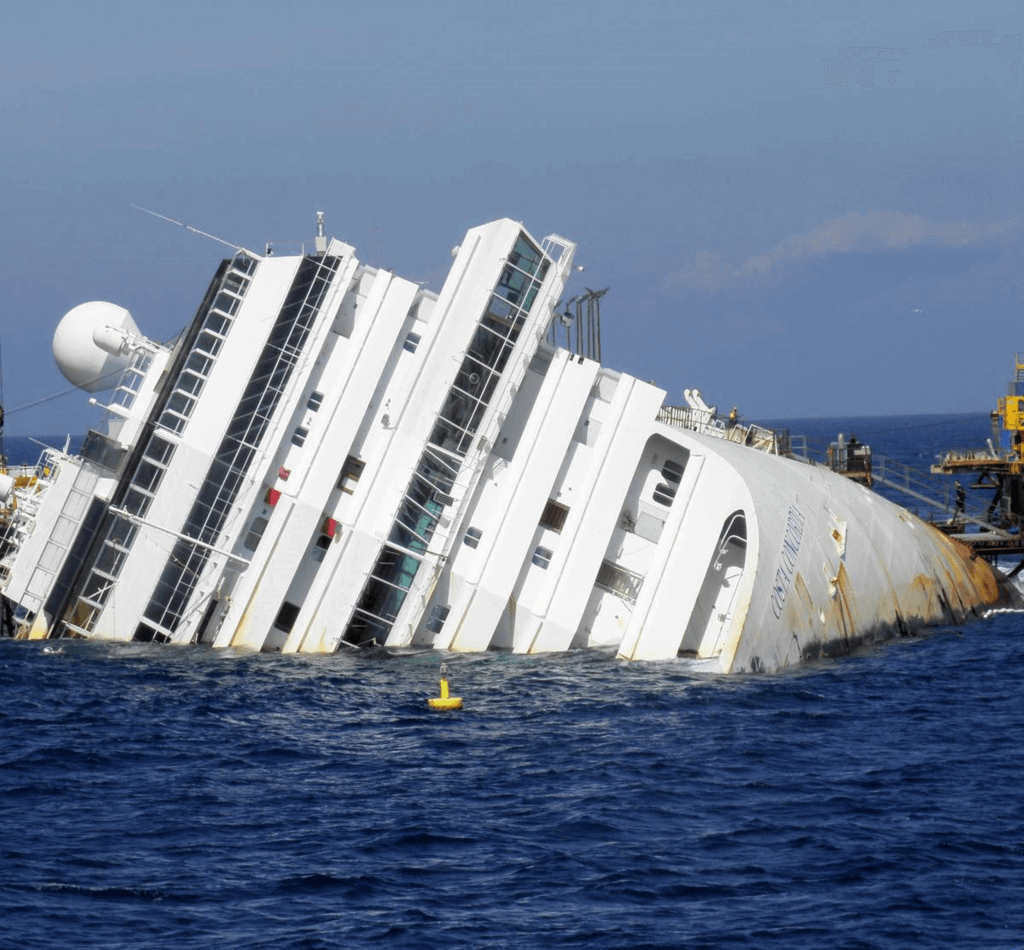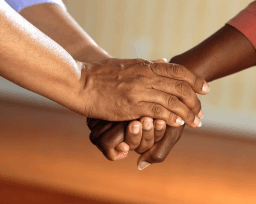Don't Give Up The Ship Day
Don't Give Up The Ship Day is observed next on Monday, June 1st, 2026 (178 days from today).

Don't Give Up The Ship Day commemorates some words of Captain James Lawrence of the USS Chesapeake as his ship was being taken over by the British and he lay mortally wounded on June 1st, 1813.
The story behind ‘Don’t give up the ship!’
On June 1st, 1813, in the midst of a bloody battle at sea between American and British frigates a few miles north of Boston, one of America's most memorable wartime slogans was born. When Captain James Lawrence of the U.S. frigate Chesapeake passed away in his cabin, his crew locked in hand-to-hand combat on the deck above, he was said to have died: “Don't give up on shipping!”
His rallying call, published a few weeks later in a Baltimore newspaper, became the U.S. Navy's unofficial motto for decades afterward, dating back long before “Remember me.” Maine” or “Remember Pearl Harbor”. Just two months after the battle, a bright blue banner bearing Lawrence's inscription flew over the mast of a ship of the same name, the USS Lawrence. Her captain, Commodore Oliver Hazard Perry, won a decisive victory on September 10th over British naval forces at the Battle of Lake Erie.
Given the way it has resonated over the years, you might think that Lawrence's memorable plea marked a heroic moment in the history of the United States armed forces. It's not. Not only did Lawrence's surviving crew abandon the ship almost immediately upon his advice, but military historians and analysts would later conclude that Lawrence had disobeyed orders to avoid traffic from the start, then make a series of tactical mistakes that all guarantee that he and his ship will lose.
Rather than taking a heroic stance, what unfolded that day and what followed was one of the most spectacular public relations coups - and deceptive - in US military history. It was made with the full support of the public. And to look back at what really happened, as it has been pieced together by historians ever since, to appreciate how little has changed in one aspect of war: our needs must turn even the most meaningless loss into a noble and challenging message.
If television existed, the battle between Shannon and Chesapeake would be a major event. The fighting, which took place about a year after the War of 1812, erupted over a number of grievances with Britain, including harsh trade restrictions imposed by the British and the illegal boarding of American ships in search of survivors. After the declaration of war, the British Royal Navy began to impede American commerce by blockading ports, including Boston, with warships based in Nova Scotia.
In late May 1813, Captain Philip Broke sailed HMS Shannon, flagship of the British blockade squadron, to Massachusetts Bay alone, knowing that the Americans had only one frigate ready to set sail in Boston. On June 1st, the Chesapeake rose to prey.
Unlike most sea battles, which take place far from land, the entire encounter seems to be made for the public. Spectators lined up on rooftops in Boston and along the North Shore, and the captains of both ships constantly had to warn a rowdy fleet of yachts and small boats to stay away.
The first shot was fired at 6pm, the last shot at 6:11pm. Color is hit at 6:15. Cannons roared, flames shot from the cannons, and battle smoke could be heard all along the shore.
Nearly every American who watched the preparations for battle was confident that the Americans would win. American ships have wowed the world in recent months by repeatedly defeating Britain's supposedly superior navy, starting with the US frigate Constitution's defeat of HMS Guerrière.
In Boston, a party was planned to celebrate the Chesapeake's expected victory over Shannon, including tables for the defeated British officers. But not a single guest came.
It should have been obvious from the beginning that Lawrence was underpowered in the first place. He had commanded the Chesapeake just two weeks before, and it was grudgingly; he wanted and felt he deserved to be in command of the famous Constitution, being in dry-dock doing repairs at the time, and had no experience working with young officers who were new to the ship. Half of his crew are also new, haven't been trained to work together, and all are angry that they haven't been paid for weeks. Some reports claim that many of the crew was drunk on June 1st.
In other word, Broke had commanded Shannon for over seven years. His crew knew him so well that they were able to steer the ship with rarely a single command being uttered. Their fortress, enhanced by special attractions designed by Broke himself, is one of the best in the fleet.
So, despite the confidence of the Americans, the premise was prepared for their crushing defeat. Broke provided it, but he got a lot of help from the American captain. Broke took Shannon within a few miles of Boston, and then flew in, waiting for the Chesapeake to sortie. Lawrence dived into the Shannon nearly stationary from the headwind, and in what could only be interpreted as an act of bravery, spun the Chesapeake around to lie parallel to the Shannon, giving both of them a chance. The two ships exchange a wide range of damage.
The carnage was huge. In less than 15 minutes, 40 members of the Chesapeake crew were killed and 96 wounded, while the Shannon had 34 killed and 56 wounded.
The Chesapeake's headboards and wheels were quickly shot away and it drifted helplessly downwind towards Shannon, where sharp riders in Shannon's battle tops could shoot down the deck of the quarter ship. One shot knocked Captain Lawrence, who is pictured below, where he famously uttered the words, according to the doctor who was watching him.
When the ships collided, Broke seized the opportunity to lead a group aboard the Chesapeake's deck. In the hand-to-hand combat that followed, Broke was also mortally wounded by a sword slashing his skull. But the colors of the Americans were soon pulled down, the Royal insignia was raised above them, and the battle was over.
By any normal measure, Lawrence should have been responsible for a costly and unnecessary failure. He had strict orders to avoid contact with the enemy and instead circumvent their blockade to harass enemy merchant ships in Saint Lawrence Bay. These he completely disobeyed, losing a frigate and his life in the process.
His famous advice was also violated immediately. With no American officers on deck to formally surrender, the British officers now commanding Chesapeake's reserve simply declared the fighting over, raised the British colors above the American flag, and imprisoned American crew members survived below deck. The two ships followed one another to the British naval headquarters in Halifax, Nova Scotia, leaving the American audience dumbfounded.
No American heroes emerged from the skirmish. The first and second lieutenants were wounded, and the fourth lieutenant was killed. Third Lieutenant William Cox was never able to regain the deck after bringing Lawrence down, and was therefore considered a scapegoat, found guilty of leaving duty, and fired from the Navy during the incident.
Lawrence died en route to Halifax. After a series of bad decisions that all ensured the loss of his ship and many of her crew, he should have been disgraced. Instead, he was punished: given a funeral in Canada with full military honors, buried there, then dismembered and taken back to Boston for another funeral, reburied in Salem, was dug up again, and finally given a proper burial at Trinity Church in New York. .
Although the real disgrace belongs to Lawrence's, it can’t occur because of the American public. They wanted a victory on June 1st, and if they couldn't get it, at least they wanted a hero and a story that helped them finds nobility in defeat. The detail of the war seems to be far-fetched; however, the creation of heroes amid senseless loss has become as familiar as Custer's Last Stand or the story of Pat Tillman in Afghanistan. Two centuries ago, we saw the picture we would like to see and with that spirit, Lawrence's failures were forgotten by time and his memory reshaped his position as a man, a hero who he always wanted to be.
How to celebrate Don't Give Up the Ship Day
This day can be celebrated by sailing, sharing Lawrence's story, or reciting a famous quote. It could be a day to stand firm and stick to your guns, or it could be a day to reflect on the power of legend and myth in shaping perceptions of war and bravery.
Observed
Don't Give Up The Ship Day has been observed annually on June 1st.Dates
Saturday, June 1st, 2024
Sunday, June 1st, 2025
Monday, June 1st, 2026
Tuesday, June 1st, 2027
Thursday, June 1st, 2028


